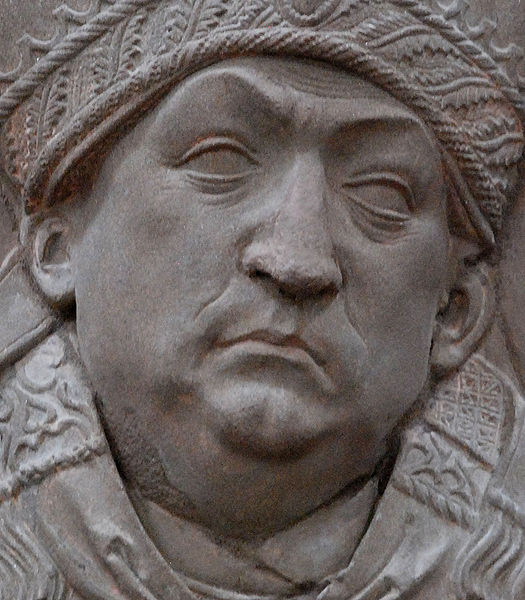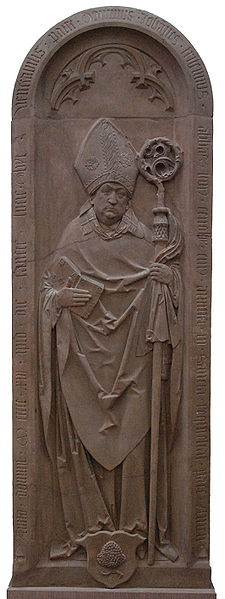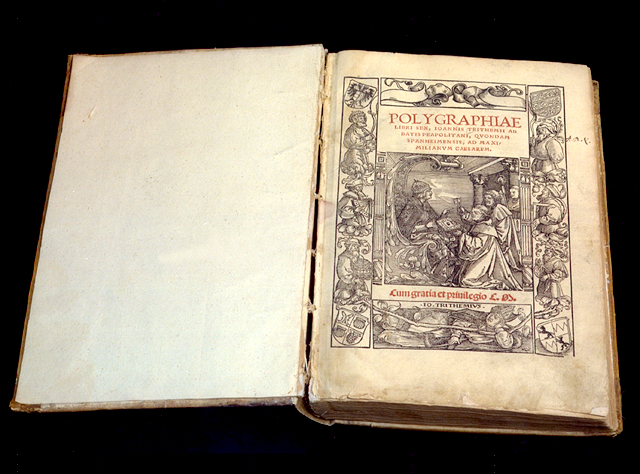<Back to Index>
- Lexicographer and Cryptographer Johannes Trithemius, 1462
- Composer Francesco Maria Veracini, 1690
- 12th Prime Minister of Canada Louis Stephen St. Laurent, 1882
PAGE SPONSOR


Johannes Trithemius (1 February 1462 – 13 December 1516), born Johann Heidenberg, was an abbot, lexicographer, historian, cryptographer, polymath and occultist who had an influence on later occultism. The name by which he is more commonly known is derived from his native town of Trittenheim on the Mosel in Germany.
He studied at the University of Heidelberg. Travelling from university to his home town in 1482, he was surprised by a snowstorm and took refuge in the Benedictine abbey of Sponheim near the Bad Kreuznach. He decided to stay and was elected abbot in 1483, at the age of twenty-one. He set out to transform the abbey from a neglected and undisciplined place into a centre of learning. In his time, the abbey library increased from around fifty items to more than two thousand. However, his efforts did not meet with praise, and his reputation as a magician did not further his acceptance. Increasing differences with the convent led to his resignation in 1506, when he decided to take up the offer of the Bishop of Würzburg, Lorenz von Bibra (bishop from 1495 to 1519), to become the abbot of St. James's Abbey, Würzburg, the Schottenklöster in Würzburg. He remained there until the end of his life. Trithemius was buried at the Schottenkirche St. Jakob with a tombstone by the famous Tilman Riemenschneider. In 1825 the tombstone was moved to the Neumünster church, next to the cathedral. In 1945 it was damaged in the firebombing and subsequently restored by the workshop of Theodor Spiegel.
Among his pupils were Heinrich Cornelius Agrippa (1486 - 1535) and Paracelsus (1493 - 1541).
Trithemius' most famous work is Steganographia (written c.1499; published Frankfurt, 1606, placed on the Index Librorum Prohibitorum in 1609, removed in 1900). This book is in three volumes, and appears to be about magic - specifically, about using spirits to communicate over long distances. Since the publication of the decryption key to the first two volumes in 1606, they have been known to be actually concerned with cryptography and steganography.
Until recently, the third volume was widely still believed to be about
magic, but the "magical" formulae have now been shown to be cover texts for yet more cryptography content. The work has lent its name to the modern field of steganography. Other works include De Laude Scriptorum (In Praise of Scribes) (written 1492, printed 1494), De septum secundeis (The Seven Secondary Intelligences, 1508), a history of the world based on astrology; Annales Hirsaugiensis (1514); and Polygraphiae (1518).
The Cipher Manuscripts were encrypted using the Trithemius cipher, a simple substitution crypto which Trithemius describes in his book Polygraphiae. The Cipher Manuscripts was used to found the Hermetic Order of the Golden Dawn, an initiatory secret society that heavily influenced Victorian and modern European occultism.
